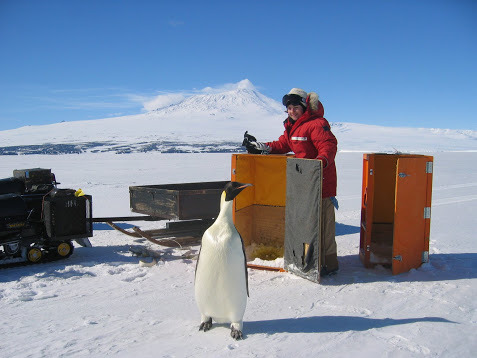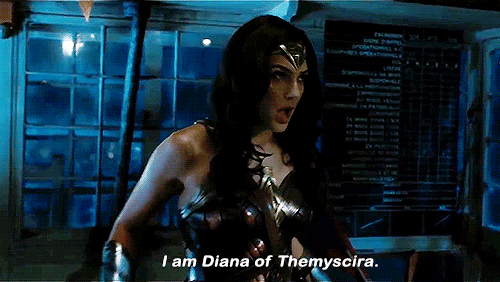I Can't Wait Any Longer FOR GOD'S SAKE NAUGHTY DOG
I can't wait any longer FOR GOD'S SAKE NAUGHTY DOG



More Posts from Dynamic-light-scattering and Others










Amazing house
Meet NASA Astronaut Jessica Meir

Jessica Meir dreamed of the day she would make it to space since the age of five. That dream became a reality on Wednesday, Sept. 25, 2019 as she left Earth on her first spaceflight – later floating into her new home aboard the International Space Station. Jessica lifted off from Kazakhstan in the Soyuz MS-15 spacecraft at 9:57 a.m. EDT (1357 GMT) alongside spaceflight participant Ali Almansoori, the first United Arab Emirates astronaut, and Oleg Skripochka, a Russian cosmonaut.

As an Expedition 61 and 62 crew member, Jessica will spend six months in the vacuum of space – conducting research on a multitude of science investigations and participating in several Human Research Program studies.
While Jessica’s new home is more than 200 miles over the Earth, she is no stranger to extreme environments. She studied penguins in Antarctica and mapped caves in Italy – both of which prepared her for the ultimate extreme environment: space.
Get to know astronaut and scientist, Jessica Meir.
Antarctic Field Researcher

For her Ph.D. research, Jessica studied the diving physiology of marine mammals and birds. Her filed research took her all the way to Antarctica, where she focused on oxygen depletion in diving emperor penguins. Jessica is also an Antarctic diver!
Geese Trainer

Image Credit: UBC Media Relations
Jessica investigated the high‐flying bar-headed goose during her post‐doctoral research at the University of British Columbia. She trained geese to fly in a wind tunnel while obtaining various physiological measurements in reduced oxygen conditions.
Wilderness Survival Expert

In 2013, Jessica was selected as an Astronaut Candidate. While training to be a full-fledged astronaut, she participated in three days of wilderness survival training near Rangeley, Maine, which was the first phase of her intensive astronaut training program.
Mission Control Flight Controller
In our astronaut office, Jessica gained extensive mission control experience, including serving as the Lead Capsule Communicator (CapCom) for Expedition 47, the BEAM (Bigelow expandable module on the International Space Station) mission and an HTV (Japanese Space Agency cargo vehicle) mission. The CapCom is the flight controller that speaks directly to the astronaut crew in space, on behalf of the rest of the Mission Control team.
She’s reconnecting with her best friend… in space!

Following a successful launch to the space station, NASA astronaut Christina Koch tweeted this image of Jessica and the crew on their journey to the orbital lab in a Soyuz spacecraft. Excitement was high as Christina tweeted, “What it looks like from @Space_Station when your best friend achieves her lifelong dream to go to space. Caught the second stage in progress! We can’t wait to welcome you onboard, crew of Soyuz 61!”

We know. #FriendshipGoals.
Follow Jessica on Twitter at @Astro_Jessica and follow the International Space Station on Twitter, Instagram and Facebook to keep up with all the cool stuff happening on our orbital laboratory.
Make sure to follow us on Tumblr for your regular dose of space: http://nasa.tumblr.com
My internet wont work 90s/2000s starter pack





Saturn’s moon Titan. True color (left) and with haze-penetrating near-infrared (right) as seen by Cassini in March 2017
i have two moods and they are gay and nervous
Get Ready To Launch America!

A new era of human spaceflight is about to begin. American astronauts will once again launch on an American rocket from American soil to the International Space Station as part of our Commercial Crew Program! NASA astronauts Bob Behnken and Doug Hurley will fly on SpaceX’s Crew Dragon spacecraft, lifting off on a Falcon 9 rocket at 4:32 p.m. EDT May 27, from Kennedy Space Center in Florida, for an extended stay at the space station for the Demo-2 mission.

As the final flight test for SpaceX, this mission will validate the company’s crew transportation system, including the launch pad, rocket, spacecraft and operational capabilities. This also will be the first time NASA astronauts will test the spacecraft systems in orbit.

Behnken and Hurley were among the first astronauts to begin working and training on SpaceX’s next-generation human space vehicle and were selected for their extensive test pilot and flight experience, including several missions on the space shuttle.

Behnken will be the joint operations commander for the mission, responsible for activities such as rendezvous, docking and undocking, as well as Demo-2 activities while the spacecraft is docked to the space station.

Hurley will be the spacecraft commander for Demo-2, responsible for activities such as launch, landing and recovery.

Lifting off from Launch Pad 39A atop a specially instrumented Falcon 9 rocket, Crew Dragon will accelerate its two passengers to approximately 17,000 mph and put it on an intercept course with the International Space Station. In about 24 hours, Crew Dragon will be in position to rendezvous and dock with the space station. The spacecraft is designed to do this autonomously but astronauts aboard the spacecraft and the station will be diligently monitoring approach and docking and can take control of the spacecraft if necessary.

The Demo-2 mission will be the final major step before our Commercial Crew Program certifies Crew Dragon for operational, long-duration missions to the space station. This certification and regular operation of Crew Dragon will enable NASA to continue the important research and technology investigations taking place onboard the station, which benefits people on Earth and lays the groundwork for future exploration of the Moon and Mars starting with the agency’s Artemis program, which will land the first woman and the next man on the lunar surface in 2024.
Get excited and follow along on social media using the hashtag #LaunchAmerica!
Make sure to follow us on Tumblr for your regular dose of space: http://nasa.tumblr.com.

Is it dead or not
I'm thirsty

i agree



Wonder Woman (2017) Captain Marvel (2019) Birds of Prey (2020)
History has been made today

The first image of a black hole, from the galaxy Messier 87
April 10, 2019
-
 kpopjxp liked this · 4 years ago
kpopjxp liked this · 4 years ago -
 cursedgoths liked this · 5 years ago
cursedgoths liked this · 5 years ago -
 lpfromzero liked this · 5 years ago
lpfromzero liked this · 5 years ago -
 suselinasusel liked this · 5 years ago
suselinasusel liked this · 5 years ago -
 aeonscloti liked this · 5 years ago
aeonscloti liked this · 5 years ago -
 usagus liked this · 5 years ago
usagus liked this · 5 years ago -
 milf-frog liked this · 5 years ago
milf-frog liked this · 5 years ago -
 kid-cota reblogged this · 5 years ago
kid-cota reblogged this · 5 years ago -
 runevines liked this · 5 years ago
runevines liked this · 5 years ago -
 themvo7 liked this · 5 years ago
themvo7 liked this · 5 years ago -
 killme-ellie liked this · 5 years ago
killme-ellie liked this · 5 years ago -
 raptortillaaa liked this · 5 years ago
raptortillaaa liked this · 5 years ago -
 vampirewithfears reblogged this · 5 years ago
vampirewithfears reblogged this · 5 years ago -
 vampirewithfears liked this · 5 years ago
vampirewithfears liked this · 5 years ago -
 lockhvrts reblogged this · 5 years ago
lockhvrts reblogged this · 5 years ago -
 stylo-snipes liked this · 5 years ago
stylo-snipes liked this · 5 years ago -
 liquidsnvke reblogged this · 5 years ago
liquidsnvke reblogged this · 5 years ago -
 artsy-but-average reblogged this · 5 years ago
artsy-but-average reblogged this · 5 years ago -
 alrightyafrodite liked this · 5 years ago
alrightyafrodite liked this · 5 years ago -
 onspiderman reblogged this · 5 years ago
onspiderman reblogged this · 5 years ago -
 emeraldgrves liked this · 5 years ago
emeraldgrves liked this · 5 years ago -
 thewhitehaireddemon liked this · 5 years ago
thewhitehaireddemon liked this · 5 years ago -
 vvenusto-mars liked this · 5 years ago
vvenusto-mars liked this · 5 years ago -
 thequeenmadamered reblogged this · 5 years ago
thequeenmadamered reblogged this · 5 years ago -
 thequeenmadamered liked this · 5 years ago
thequeenmadamered liked this · 5 years ago -
 sattosugu liked this · 5 years ago
sattosugu liked this · 5 years ago -
 triplealovely liked this · 5 years ago
triplealovely liked this · 5 years ago -
 alicedyers reblogged this · 5 years ago
alicedyers reblogged this · 5 years ago -
 alicedyers liked this · 5 years ago
alicedyers liked this · 5 years ago -
 hellokittyzone liked this · 5 years ago
hellokittyzone liked this · 5 years ago -
 adamjensens liked this · 5 years ago
adamjensens liked this · 5 years ago -
 stranger--creatures reblogged this · 5 years ago
stranger--creatures reblogged this · 5 years ago -
 stranger--creatures liked this · 5 years ago
stranger--creatures liked this · 5 years ago -
 hellblzrs reblogged this · 5 years ago
hellblzrs reblogged this · 5 years ago -
 millipop reblogged this · 5 years ago
millipop reblogged this · 5 years ago -
 deanleto-blog liked this · 5 years ago
deanleto-blog liked this · 5 years ago -
 pricemarshfield reblogged this · 5 years ago
pricemarshfield reblogged this · 5 years ago -
 jesusfuckingchrist reblogged this · 5 years ago
jesusfuckingchrist reblogged this · 5 years ago -
 shiimada liked this · 5 years ago
shiimada liked this · 5 years ago
